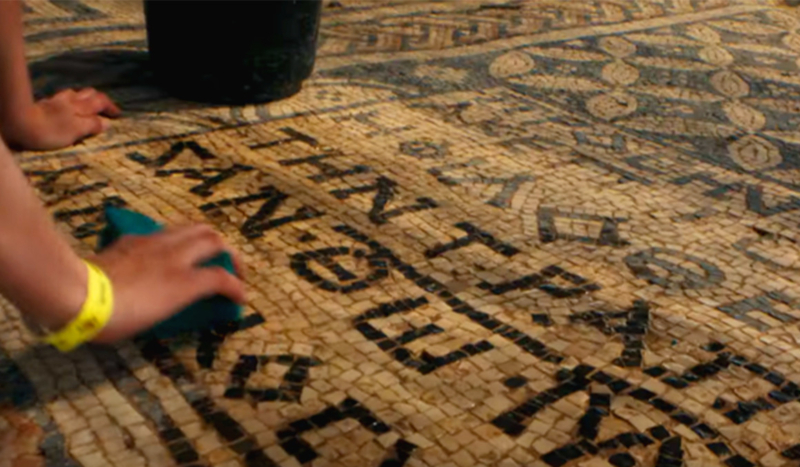
CV NEWS FEED // The Museum of the Bible in Washington, DC, has announced it will soon debut an exhibit featuring a historic mosaic floor, which the Israel Antiquities Authority (IAA) conserved earlier.
The decorative floor, known as the Megiddo Mosaic, “formed part of the floor of the oldest site of Christian worship ever to be discovered,” according to an emailed press release from the Museum.
“The Megiddo Mosaic: Foundations of Faith” will be open to guests on Sept. 15. It will remain on display for nine months. The exhibit will then appear at additional venues before returning to Israel, where it will be part of a permanent exhibit at the site where it was discovered.
Twenty years ago, during a pre-construction archeological dig in the Meggido prison in Israel, Dr. Yotam Tepper, of the IAA, uncovered the mosaic and the building that contained it because there had been plans to build a new wing in the prison.
“Eventually, prisoners worked alongside archeologists to uncover the rare discovery,” the release said.
The IAA Conservation Department preserved the mosaic during the site conservation and reburied it while the IAA conducted research. The IAA decided to move the mosaic for exhibition in 2024, and archeologists and conservators unearthed the historic floor once again.
“This is arguably one of the most important archaeological discoveries for understanding the early Christian church,” Bobby Duke, interim Chief Curator and director of Scholars Initiative at the Museum of the Bible, stated in the release.
“For example,” he continued: “the mosaic underscores the crucial role of women in the early church by the fact that 5 women are mentioned in it by name. Truly, the mosaic presents a wealth of new data for church historians, like the Dead Sea Scrolls did for Bible scholars.”
Various artifacts of the Roman Sixth Legion Ferrata that were discovered during the excavation will accompany the mosaic. The fragments include “roof tiles, an inscribed bread stamp, a bronze statuette of the Roman god of home Lar, engraved Carnelian intaglios, fragments of moratorium pottery with the Greek inscription ‘Peace and Luck,’ and coins,” as per the release.

